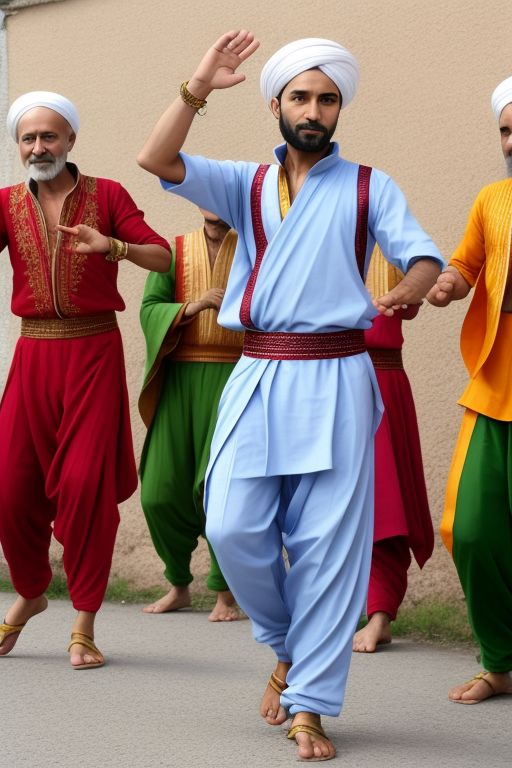Dancing with Chaos: The Glorious Madness of Kolbastı
If you’re ever wandering through the bustling streets of a Turkish wedding and suddenly hear a wild drumbeat, followed by a flurry of foot stomps and something that looks suspiciously like a dance-off between caffeine-addicted squirrels—congratulations, you’ve just witnessed the one and only Kolbastı.
Kolbastı is not just a dance. It’s an energy drink in human form. It’s what happens when you mix tradition, rebellion, a Black Sea beat, and the general desire to show off in front of your crush. Born in the misty mountains of Trabzon on Turkey’s Black Sea coast, Kolbastı is the national sport of hyperactive wedding guests and the secret weapon of uncles who think they’ve still “got it.”
But to understand Kolbastı, one must journey into its legendary origin, which is equal parts truth, myth, and espresso-fueled fever dream.
A Dance Born of the Night (and Maybe the Police)
Legend has it that Kolbastı started in the 1930s or 1940s in Trabzon, as a response to the late-night police patrols who were trying to keep rowdy youngsters off the streets. The word “Kolbastı” loosely translates to “caught by the arm.” The story goes that when young men were out too late causing trouble (or just having a laugh), police would grab them “by the arm” and drag them home. Instead of just hiding or behaving like normal people, these youths decided to create a dance about it.
Because nothing says “we’ve learned our lesson” like a full-body celebration of being detained.
In this alternate universe of Trabzon, being chased by law enforcement became performance art. One can imagine these early Kolbastı pioneers saying, “Sure, we got caught—but did you see my footwork?”
Thus, a dance was born. And not just any dance—a dance that breaks the boundaries of tempo, personal space, and occasionally, the floorboards of unsuspecting wedding venues.
Kolbastı: The Workout You Didn’t Know You Needed
Trying to describe Kolbastı to someone who’s never seen it is like trying to explain jazz to a goldfish. It’s rhythmic, unpredictable, and strangely emotional. It begins with the dancers forming a loose group, like a group of penguins deciding who’s going to jump in first. Then, someone launches into a frenzied storm of foot stomps, spins, and vaguely threatening hand gestures. Soon, the others follow, and suddenly it’s not a dance—it’s a cardio crisis with musical accompaniment.
The key to Kolbastı is energy. If you’re not sweating in the first 20 seconds, you’re doing it wrong. Most dancers move as if they’re trying to put out a fire using only their limbs and pure adrenaline.
 A typical Kolbastı session includes:
A typical Kolbastı session includes:
Aggressive foot tapping (as if the floor owes you money),
Rapid shoulder shakes (think cold shower in January),
Squatting and bouncing (part dance, part glute workout),
And the signature “Kolbastı walk,” a move that says “I’m marching into battle but make it funky.”
Bonus points if you make eye contact with the audience like you just discovered the meaning of life and it has a beat.
The Black Sea Swag
People from the Black Sea region are known in Turkey for being lively, funny, and just a little bit unhinged—in the best way. Kolbastı is their anthem. It’s fast, furious, and proudly chaotic. It’s the dance equivalent of someone bursting into your house uninvited and bringing their own speakers—and somehow, you’re glad they came.
It’s no surprise then that Kolbastı has become a staple at weddings. Why? Because nothing brings people together like shared confusion and synchronized squatting.
At Turkish weddings, there’s always That Guy—the uncle who’s waited 25 years to show off his Kolbastı skills. You’ll spot him loosening his tie, cracking his knuckles, and giving his knees a pep talk. The music hits, and suddenly he’s 22 again. His body moves like electricity, his eyebrows perform their own interpretive dance, and small children clear the area for safety.
Meanwhile, cousins form a backup line, like a boy band with identity issues, and the groom is somewhere in the back thinking, “This wasn’t in the plan, but okay.”
YouTube Fame and the Global Kolbastı Takeover
Somewhere along the way, Kolbastı made its way to the internet—and that’s when things really got weird.
Young Turkish guys began uploading videos of themselves performing Kolbastı in unusual places—schoolyards, gyms, gas stations, airports. There’s probably a Kolbastı performance happening right now at a bus stop near you. Suddenly, the dance was no longer just a local tradition. It was a movement—literally and culturally.
Kolbastı became a viral sensation, with even international dancers trying their hand (and legs) at its demanding moves. Of course, many underestimated it. From the outside, it looks fun. From the inside, it feels like you just sprinted a marathon while dodging invisible bees.
Some fitness instructors even adopted Kolbastı for cardio classes, though most students tapped out by minute three and left the studio questioning their life choices.
Kolbastı is more than just a dance. It’s a celebration of life, rebellion, and the unshakable belief that no matter what’s going on—weddings, breakups, taxes—there’s always time to bust a move. It’s the heartbeat of the Black Sea coast and the unofficial Olympic sport of Turkish joy.
So the next time you feel the rhythm in your bones and your feet start tapping uncontrollably, don’t resist. Drop what you’re doing, take a deep breath, and summon your inner Trabzon spirit.
Because life is short. Dance fast. Dance loud.
Dance Kolbastı.
.
.
.
.
.
.
.
.






